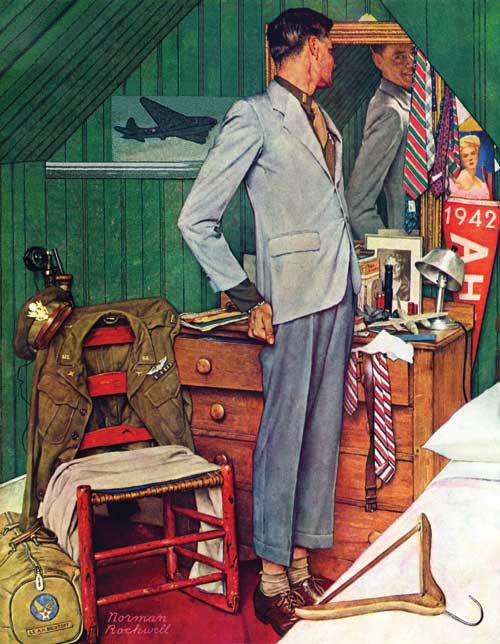The Rockwell Files: Pain in the Rear

When Norman Rockwell was planning this iconic Post cover, he spent a certain amount of time considering how much of the boy’s derriere to show.
Too much cheek would be considered rude, and too little wouldn’t be funny. He discussed it with friends and family and finally settled for this half-up, half-down compromise.
Later that same year, the same young model, Eddie Locke, would pose alongside a state policeman for Rockwell’s Runaway cover.
As an adult, Eddie was asked what his boyhood friends thought of his modeling for the Post.
“You know,” he replied, “when you’re sitting with a police officer, that’s one thing. When you’re posing with your pants down, that’s quite another.”
Rockwell Files: Coming Home

Millions of veterans would have smiled in recognition at the Post’s December 15, 1945, cover, having recognized one of those humorous incidents faced when trying to resume civilian life.
Rockwell chose to depict a veteran of the Army Air Corps, as indicated by insignia on the jacket and cap. Back in 1942, this young man would still have been attending Arlington [Vermont] High School (note the AHS pennant). Now, after three life-altering years, he finds he has outgrown his old suit. He’s also outgrown his attic bedroom and will soon be hitting his head on those sloped ceilings.
Rockwell took his penchant for realism one step further on this cover. For his model, he used a real pilot, Lt. Arthur H. Becktoft Jr., who’d flown with the 349th Bomber Squadron. In October 1943, while piloting his B-17 “War Eagle” on a raid over Hamburg, Germany, he was shot down. Becktoft and his crew parachuted and were soon captured. They spent the next 20 months in a German POW camp. For this cover, Becktoft had reason to smile.
This article is featured in the January/February 2018 issue of The Saturday Evening Post. Subscribe to the magazine for more art, inspiring stories, fiction, humor, and features from our archives.